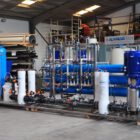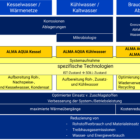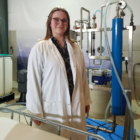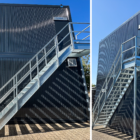Seawater desalination is a key technology for providing drinking water and process water in regions with water shortages. This technology enables the conversion of salty seawater into high-quality fresh water and plays an important role in supplying households, industry and agriculture. However, the complexity and energy requirements of the processes pose considerable technical and economic challenges. This article provides a comprehensive insight into the technologies, technical background and practice of seawater desalination.
Table of contents
Physico-chemical principles of seawater desalination
On average, seawater contains around 35,000 mg/l of dissolved salts, mainly sodium chloride (NaCl), as well as trace elements and organic impurities. The salt content, also known as TDS (Total Dissolved Solids), makes it unsuitable for direct consumption or many industrial applications. The aim of seawater desalination is to remove these salts and impurities in order to improve the water quality.
Desalination is achieved by separating water and salt. This is achieved using physical, chemical or thermal processes, each of which has different energy and technology requirements.
Seawater desalination technologies
Reverse osmosis (RO)
Reverse osmosis is the most commonly used technology for seawater desalination worldwide and is based on the principle of semi-permeable membranes that only allow water molecules to pass through and retain salts.
Functionality:
- Seawater is pressed through a membrane under high pressure (50-70 bar).
- Salts, microorganisms and organic substances are retained in the concentrate flow, while the demineralized water (permeate) is made available for further use.
Advantages:
- High efficiency and salt retention rates of up to 99 %.
- Compact design and modular expansion options.
Challenges:
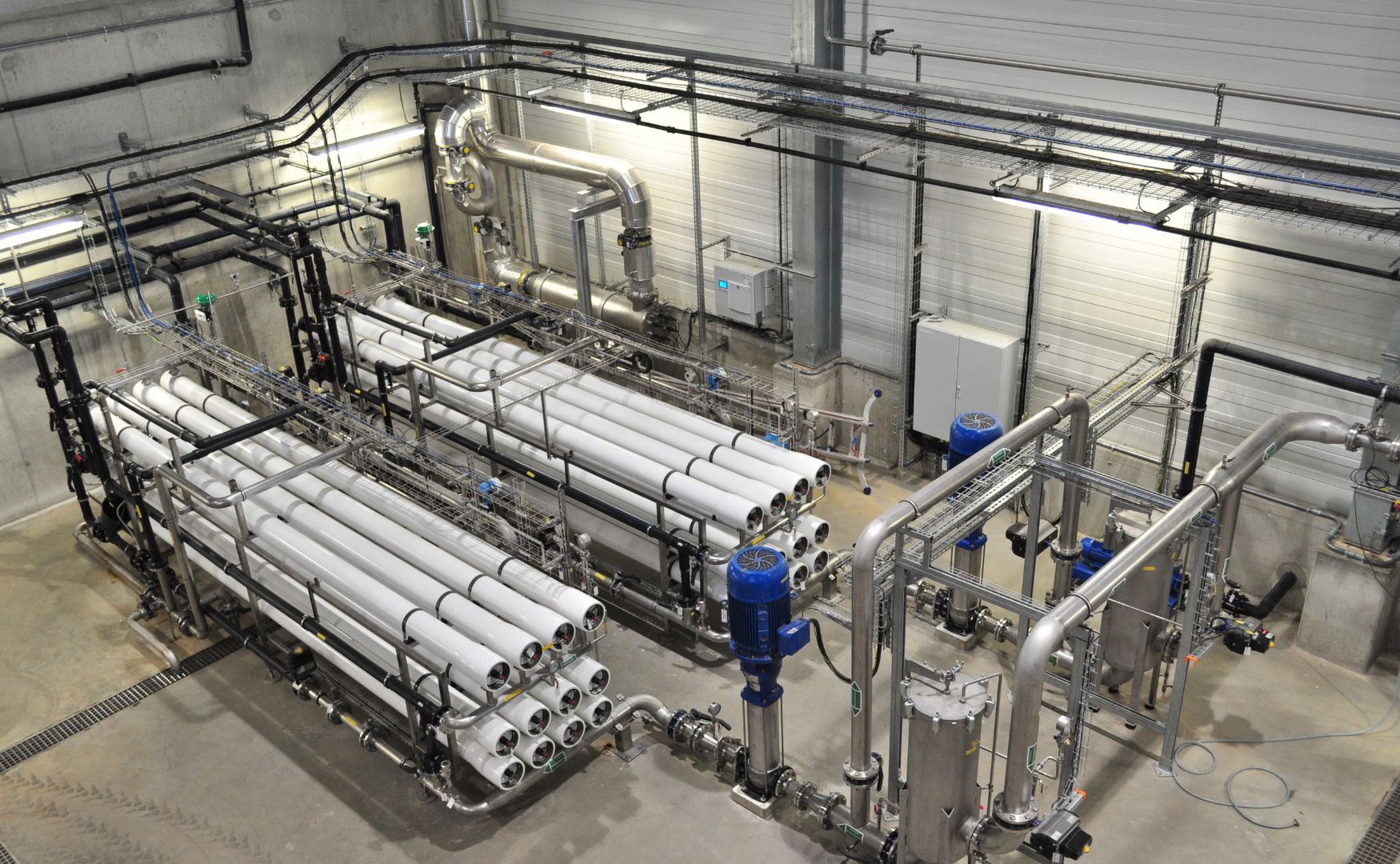
Photo: ALMA OSMO reverse osmosis system for industrial process and waste water
Pre-treatment of the seawater
Effective pre-treatment of the seawater is an essential step before the actual desalination, whether by reverse osmosis (RO) or thermal processes. The aim of this process is to improve the water quality in such a way that deposits (scaling), fouling and corrosion in the main plant are avoided. Well-planned pre-treatment extends the service life of the system components, increases operating efficiency and reduces maintenance costs. Pre-treatment comprises several coordinated steps that are adapted depending on the raw water quality and desalination process.
1. gravel and sand filtration
The first stage of pre-treatment is the removal of coarse impurities such as suspended matter, sediment and large particles. This is done by using gravel or sand filters based on the principle of mechanical filtration.
- How it works: The seawater flows through a layer of fine-grained filter material such as quartz sand or granulate. Particles remain trapped in the filter layer while the purified water is passed on.
- Objective: To prevent blockages and mechanical damage in downstream filtration or membrane systems.
- Regeneration: Regular backwashing of the filter system removes accumulated particles and restores full performance.
2. ultrafiltration (UF)
Ultrafiltration is often used as the second stage of pre-treatment. It is particularly effective in removing small particles, colloidal impurities, microorganisms and turbidity.
- Functionality: UF systems use semi-permeable membranes with pore sizes in the range of 0.01 to 0.1 micrometers. The water is pressed through these membranes, whereby unwanted particles are retained.
- Advantages:
- High efficiency in removing microorganisms such as bacteria and algae, which reduces the risk of biofouling in the main system.
- Reduction of turbidity and SDI values (Silt Density Index), which are crucial for the operation of reverse osmosis membranes.
- Regular cleaning: The membranes must be maintained by chemical cleaning or backwashing to prevent deposits and fouling.
3. dosing of chemicals
Chemical treatments are an integral part of pre-treatment in order to avoid specific problems such as scaling and biofouling. Dosing is carried out in precise quantities, tailored to the water quality and the desalination process used.
- Antiscalants: These chemicals inhibit the precipitation of calcium carbonate, barium sulphate or other mineral compounds that could be deposited on membranes or heat exchangers under pressure and temperature.
- Biocides: These prevent the growth of microorganisms, algae and biofilms, which can significantly impair the efficiency of the systems. Examples are oxidizing agents such as chlorine or non-oxidizing agents such as isothiazolinones.
- pH control: The pH value of the seawater is stabilized to improve the efficiency of the chemical treatment and prevent the formation of deposits.
4. degassing
Dissolved gases such as oxygen and carbon dioxide in seawater can cause corrosion and scaling in the system. Degassing is an important step in removing these gases.
- Oxygen removal: Oxygen promotes corrosion in metallic system parts. The oxygen content is reduced by chemical methods such as the addition of sodium sulphite or physical processes such as vacuum degassing.
- Carbon dioxide removal: Dissolved CO₂ increases water hardness through the formation of calcium carbonate. Degassing or the use of deacidification units helps to reduce the carbon dioxide content and thus prevent scaling.
- Technologies: In addition to chemical methods, physical processes such as membrane degassing or stripping columns are also used.
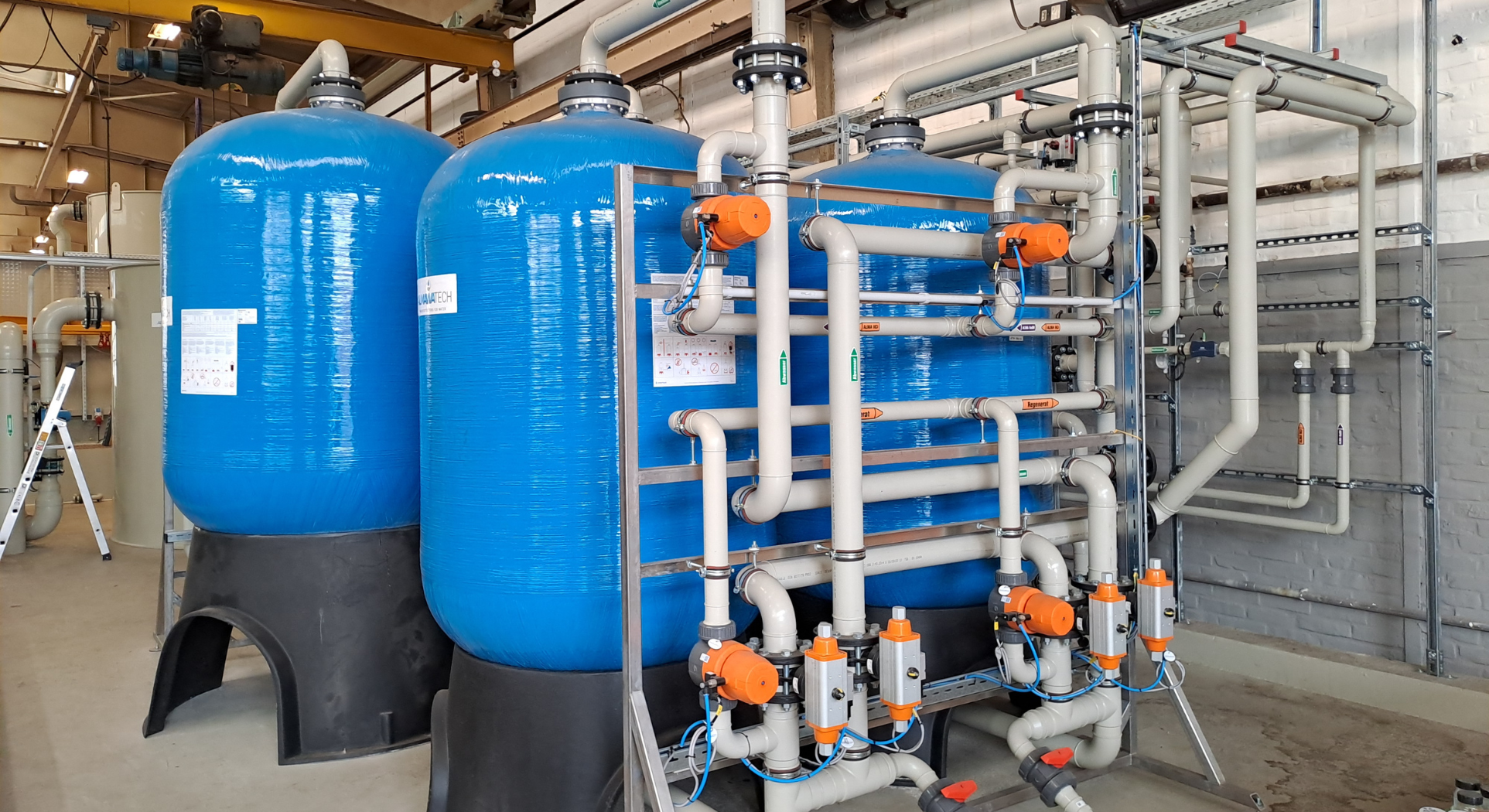
Photo: Our multi-layer filter ALMA Fil
Energy requirements of seawater desalination
Seawater desalination is energy-intensive. Measures to increase energy efficiency are crucial in order to reduce operating costs and minimize environmental impact:
- Energy recovery systems: Pressure exchangers (PX) and turbines use the pressure of the concentrate flow to recover energy.
- Optimization of the membrane configuration: Reduction of pressure loss in RO systems.
- Integration of renewable energies: Solar and wind power can support the energy supply of desalination plants.
Environmental aspects of seawater desalination
Disposal of the concentrate stream is one of the biggest challenges of seawater desalination. Direct discharges into marine environments can damage local ecosystems. Innovative approaches to minimize the environmental impact include:
- Dilution: The concentrate stream is diluted with other water streams before it is discharged into the sea.
- Recovery of minerals: extraction of salts and metals from the concentrate stream.
Conclusion
Seawater desalination is an essential technology for ensuring global water availability. Although it is energy-intensive, modern technologies such as reverse osmosis and innovative pre-treatment processes offer solutions to increase efficiency and sustainability. With the integration of renewable energy and advanced disposal technologies, seawater desalination can not only alleviate water scarcity but also make an important contribution to a greener future.
For further information on our products, please feel free to contact us at any time!




